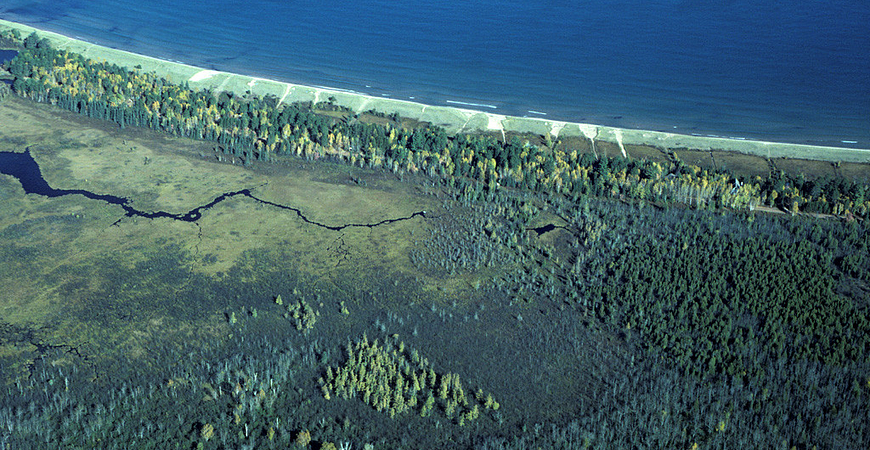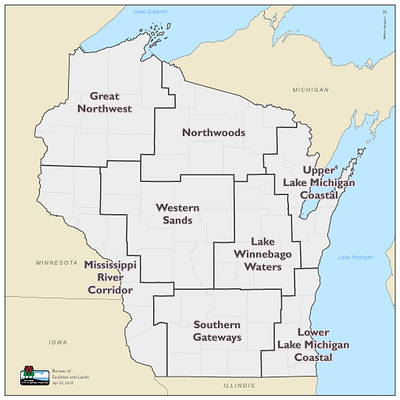About property planning

Wisconsin DNR owns and manages over 1.6 million acres of properties on behalf of Wisconsin’s 5.8 million residents. These properties provide a wide range of recreation opportunities and diversity of habitats throughout the state. They are managed according to a set of goals and objectives described in “master plans,” which are updated periodically. Master plans are developed according to guidelines set forth in Ch. NR 44, Wis. Admin. Code, which is known as the "master plan rule."
DNR develops master plans to describe and direct how its properties will be used, managed and developed. A master plan for a DNR property details the authorized resource management, recreation management — including the level and types of public uses permitted — and facility development needed to support management on the property. It acts as a blueprint for the property, providing for consistent, long-term management. Master plans are developed by integrated teams of resource professionals from all appropriate DNR programs with input from property users, stakeholders and the interested public, which is solicited throughout the planning process.
Master plans play a critical role within DNR. They:
- Provide a sound basis for decision-making by department staff, administrators and the Natural Resources Board;
- Ensure that all appropriate department programs and interests are integrated into property management decisions;
- Provide clear and specific direction on the management, development and use of the property for property managers, administrators and the interested public;
- Provide for consistent, long-term management of properties regardless of personnel changes; and
- Provide justification for the budget process to help ensure that funding is provided for developments and other actions specified in the master plan.
Public involvement process
The input of property users, stakeholders and the interested public is an important component of developing master plans. There are opportunities for public input throughout the planning process. The department typically seeks public input at three key points: when a plan is being initiated, when a draft plan is released for public comment and when a plan is presented to the Natural Resources Board for approval. Please see the individual regional planning pages for specific public input opportunities and contact information.
Policy guidance
The following links provide policies that guide the development of property master plans.
- Ch. NR 44, Wis. Admin. Code, Master planning for department properties
- Ch. NR 45, Wis. Admin. Code, Use of department properties
- s. 23.116, Wis. Stats., Motorized access plans
- Forest certification on DNR lands
Regional planning approach

The 16 Ecological Landscapes of Wisconsin
The department has embarked on a regional planning approach based on Ecological Landscapes. Ecological Landscapes (ELs) are regions of the state that are distinguished by unique ecological characteristics and management opportunities. These regions were delineated using a land classification system developed by the U.S. Forest Service in cooperation with other federal and state partners.
A regional master plan for each of the 16 ELs in Wisconsin will include all department properties within that landscape. Properties are usually assigned to the EL within which most of their acreage resides.
The Ecological Landscapes of Wisconsin is a reference compendium of 23 chapters that provides a detailed assessment of these 16 ELs. For each EL, there are descriptions of: 1) natural resources and socioeconomic conditions; 2) Wisconsin’s role in sustaining these resources within regional and global perspectives; and 3) highlights of management opportunities best suited for each EL. The book provides tools to develop management strategies that are ecologically appropriate for a region.

Recreation Opportunities Analysis regions
The department will use the summary recommendations from the Recreation Opportunities Analysis (ROA) to inform recreation decision-making during the master planning process. The ROA consists of an eight-part document that identifies: 1) the most pressing recreation needs in different parts of the state, and 2) the department-managed properties that may be able to help meet those needs. These are considered within the context of the relevant Ecological Landscape master plan.
The process of situating properties within a broader context from both ecological and recreational perspectives is an essential feature of master plans. It ensures that the public uses, facility development and resource management described, established and authorized in master plans are consistent with regional needs and demands, ecological capabilities, management opportunities and department priorities. The EL and ROA analyses highlight statewide and regional recreational and resource management opportunities and goals that can then be "stepped down" to individual properties or property groups within a region, making master planning more strategic, integrated and efficient.
